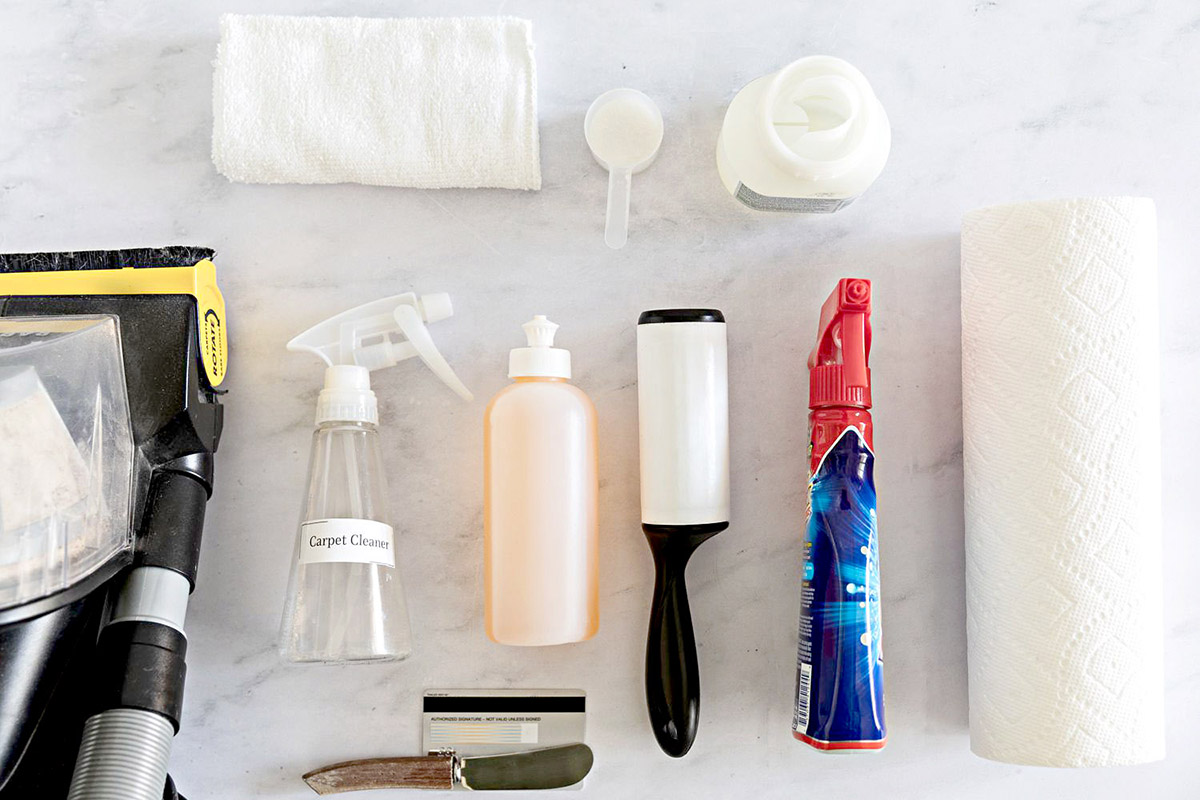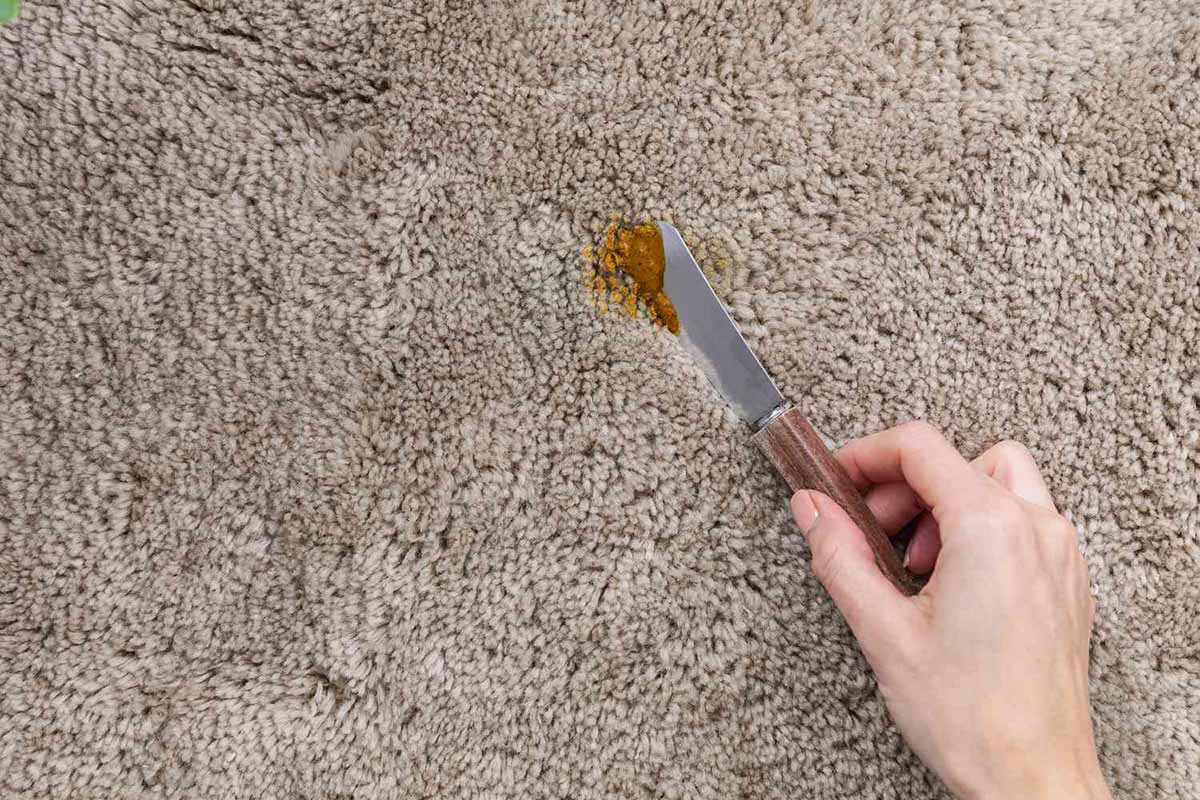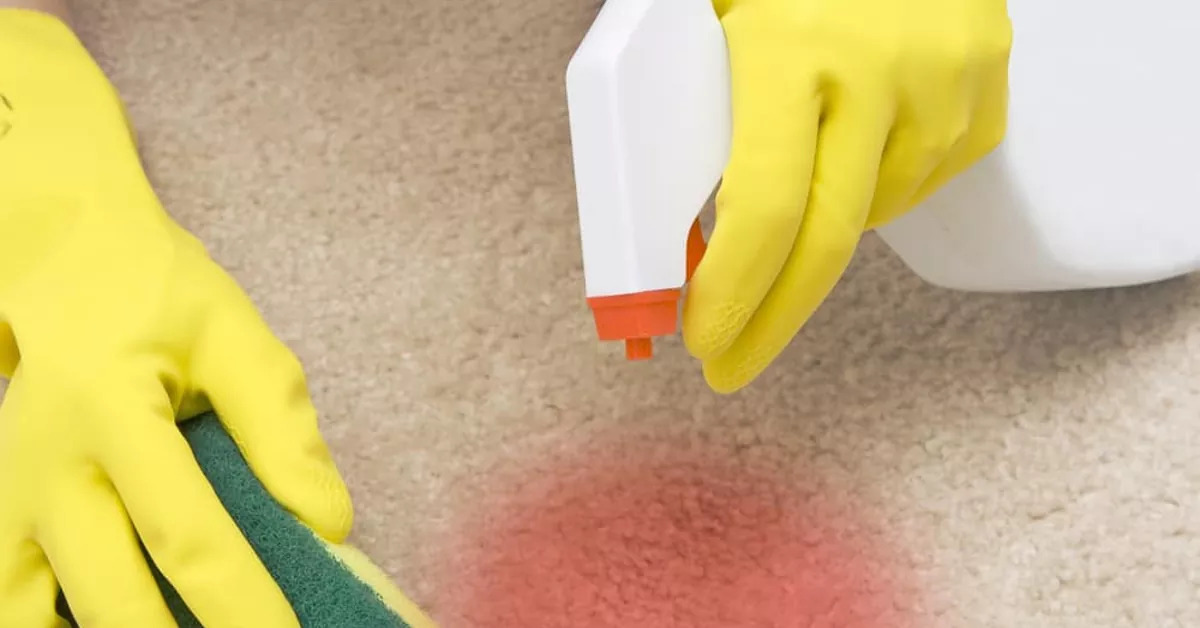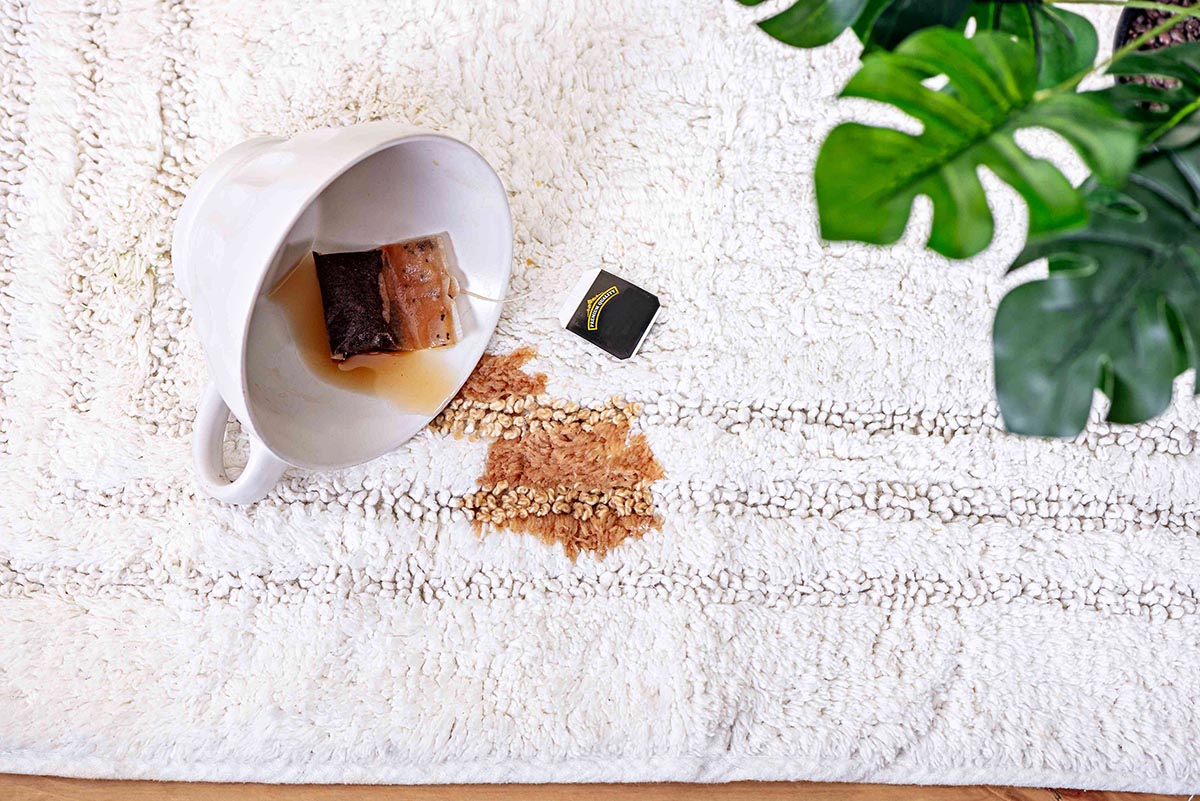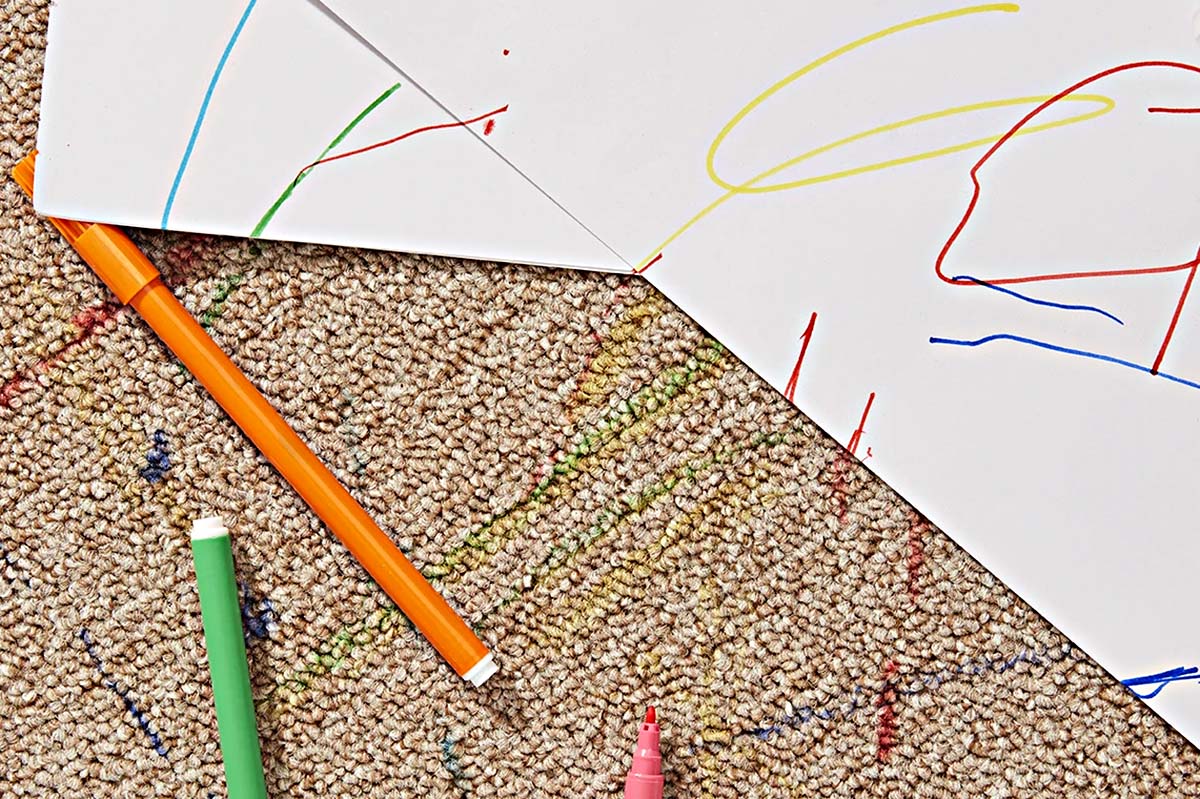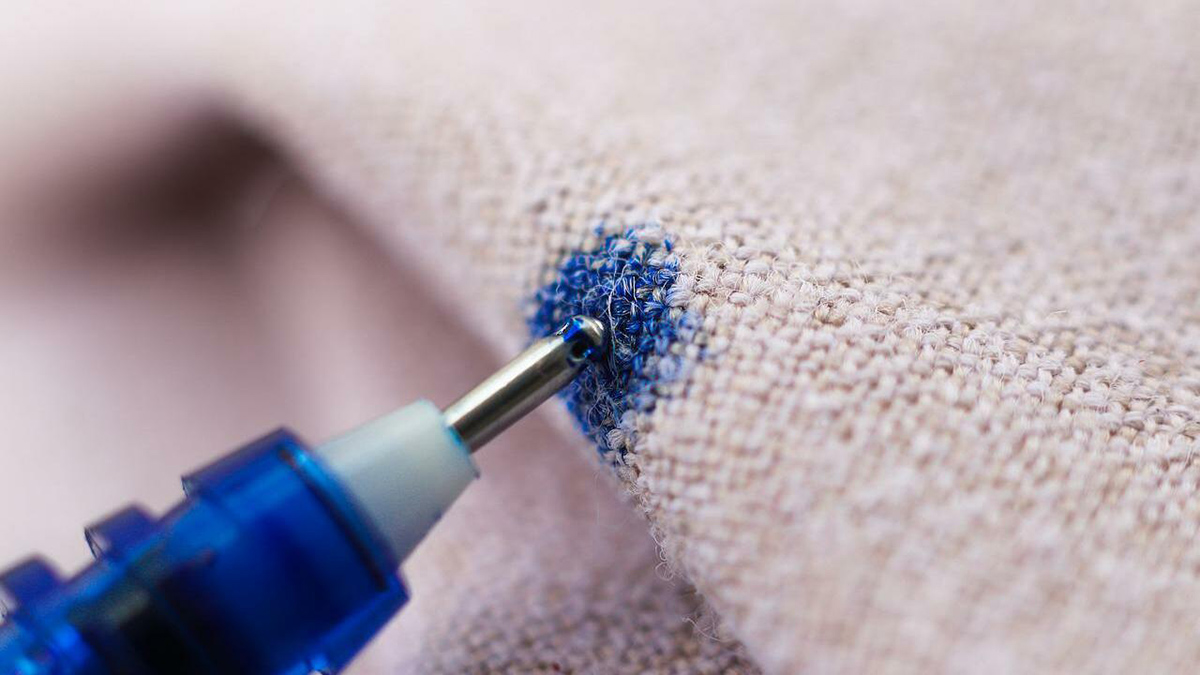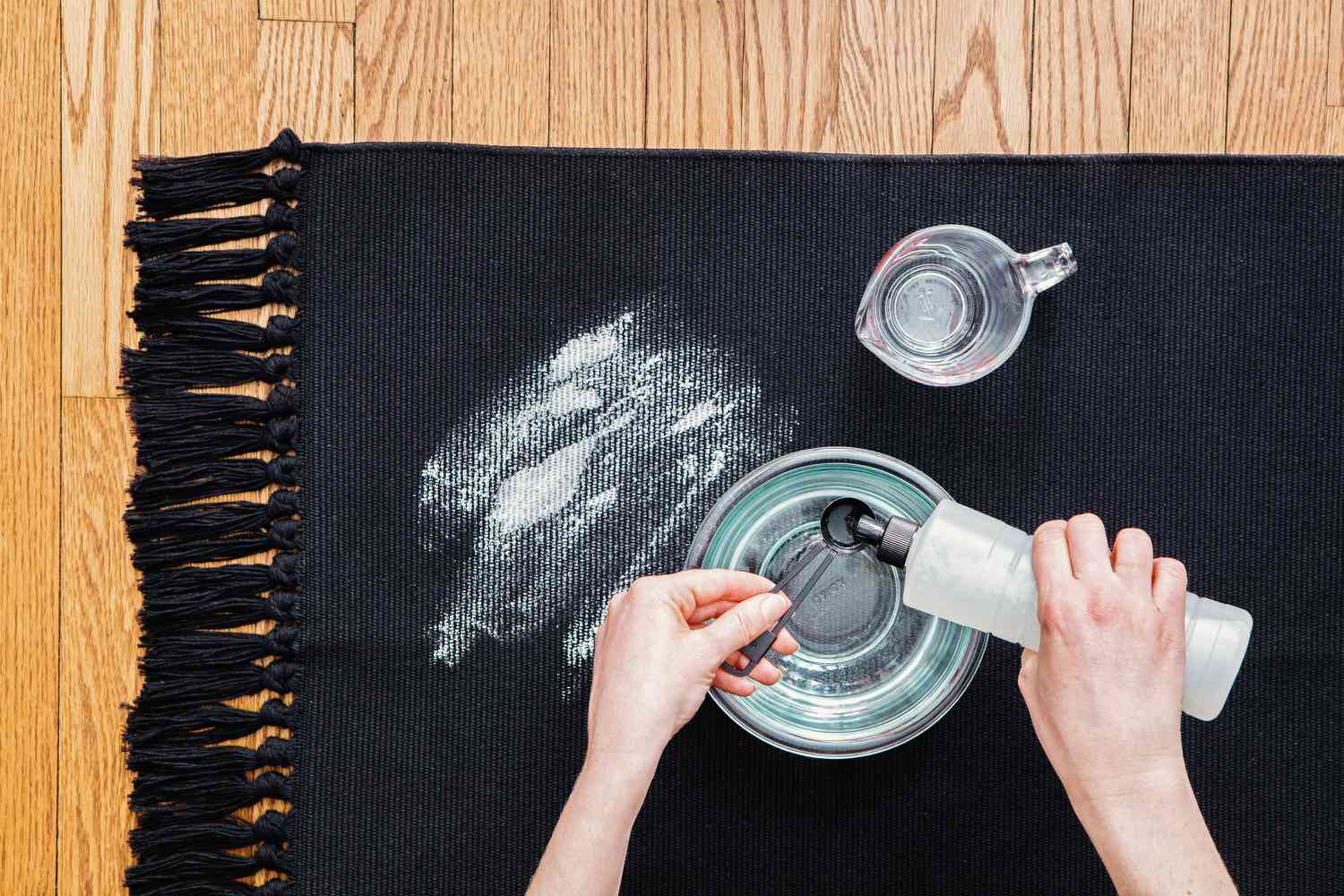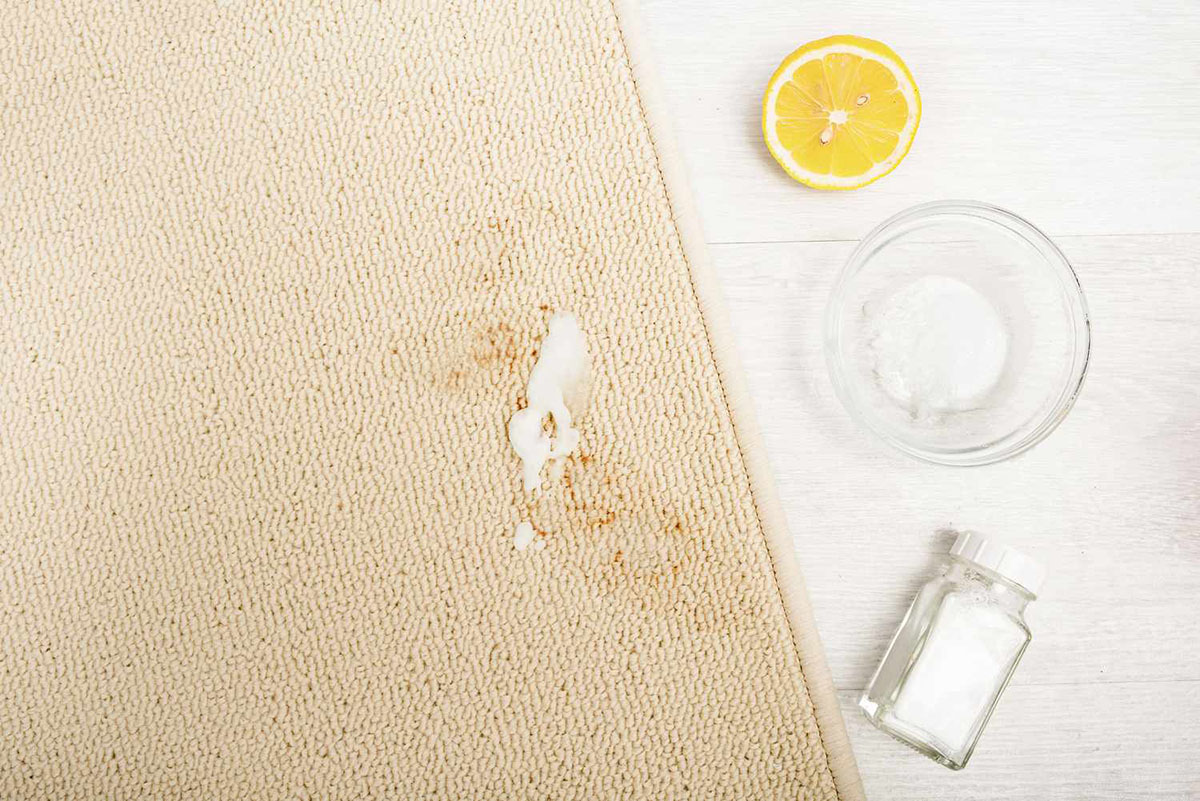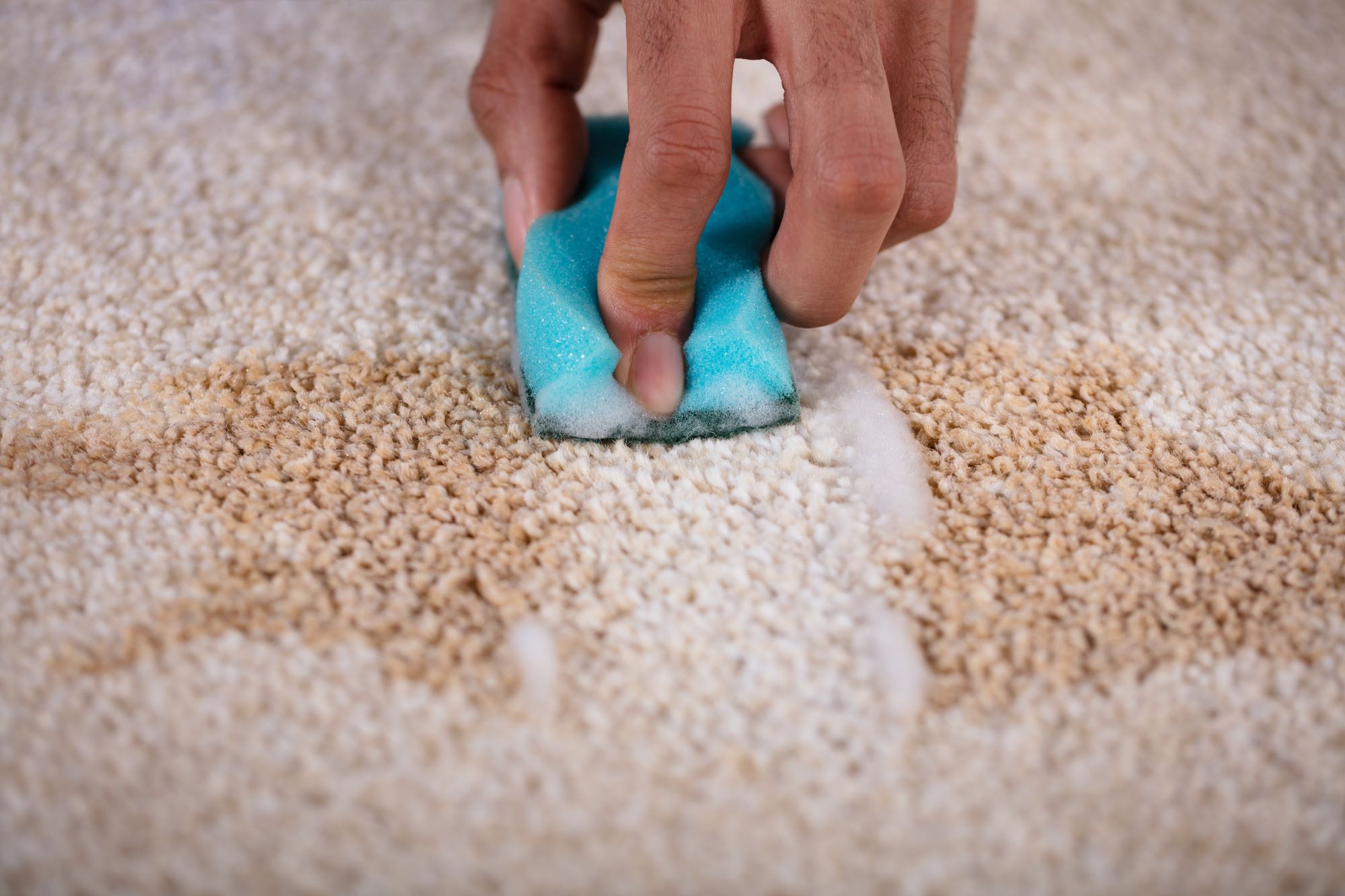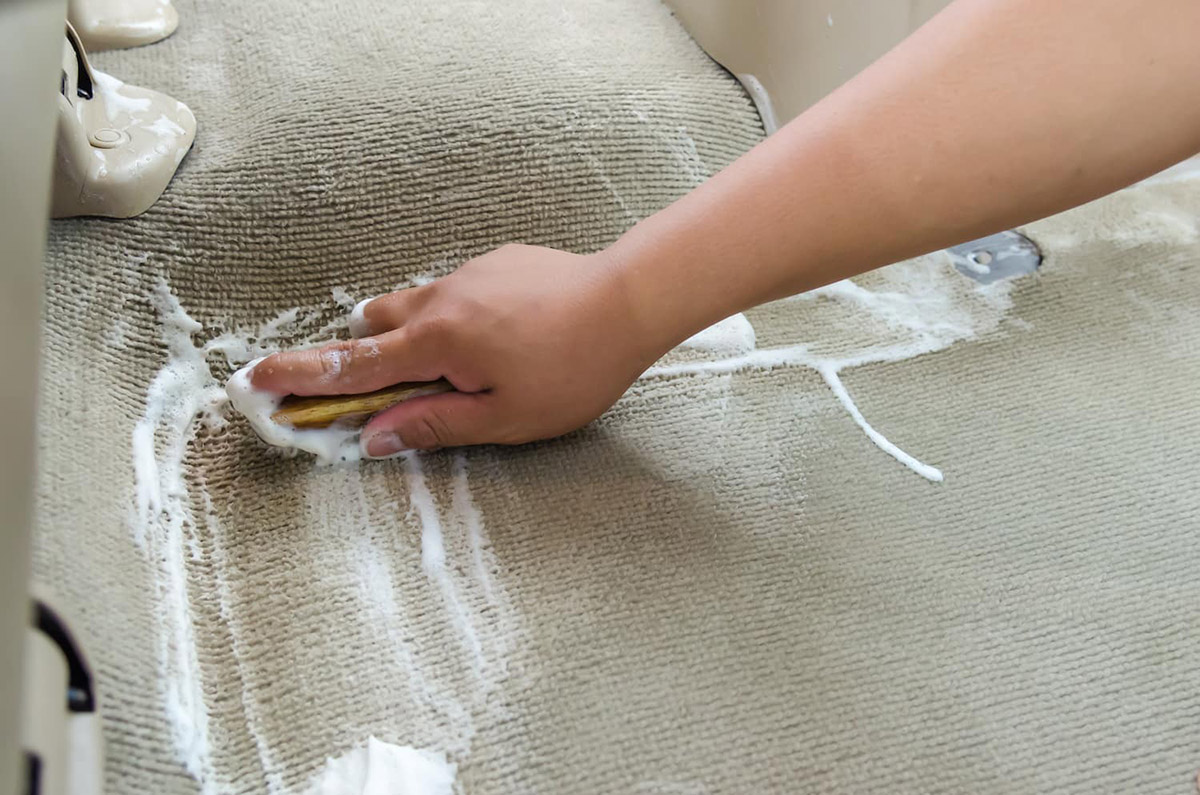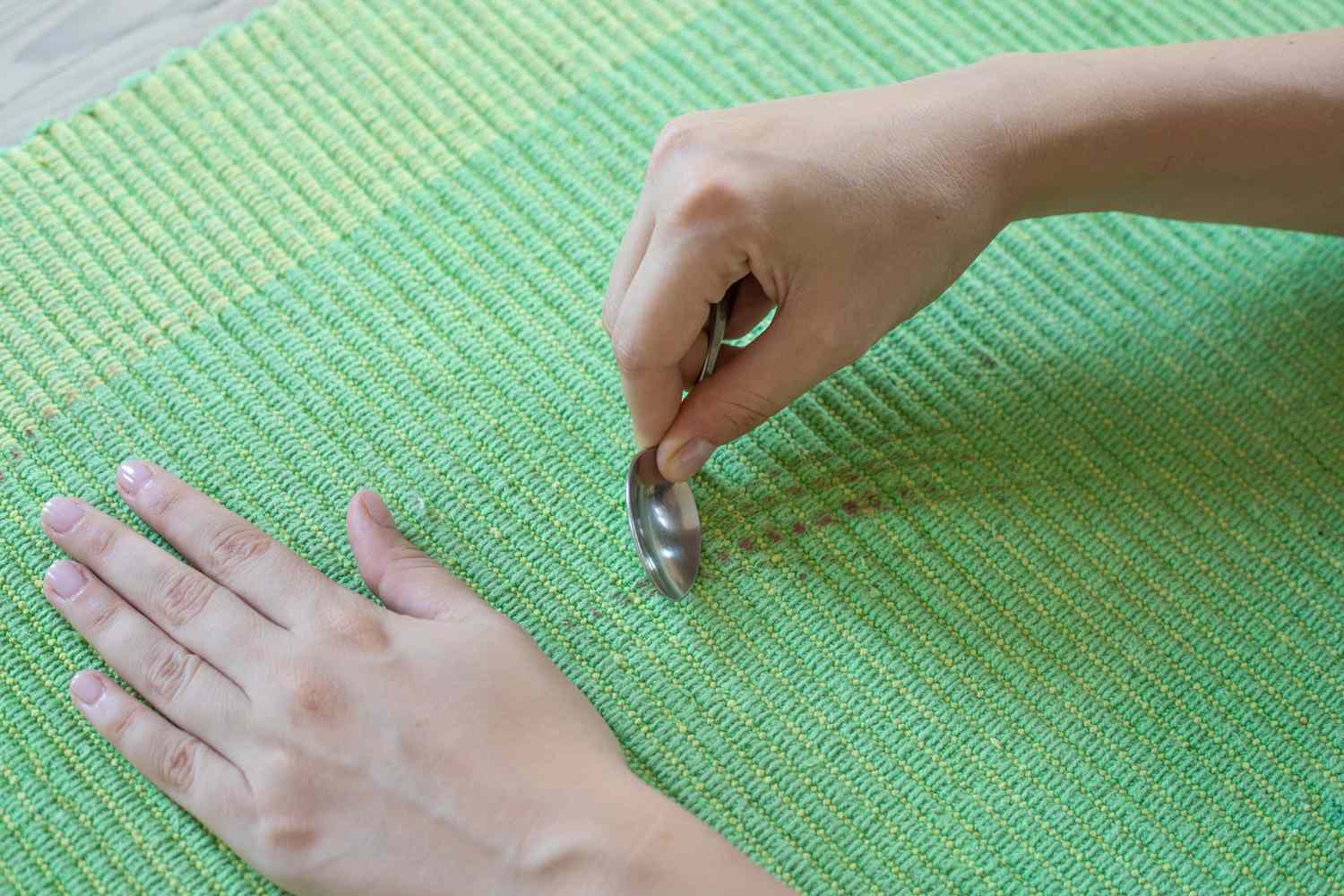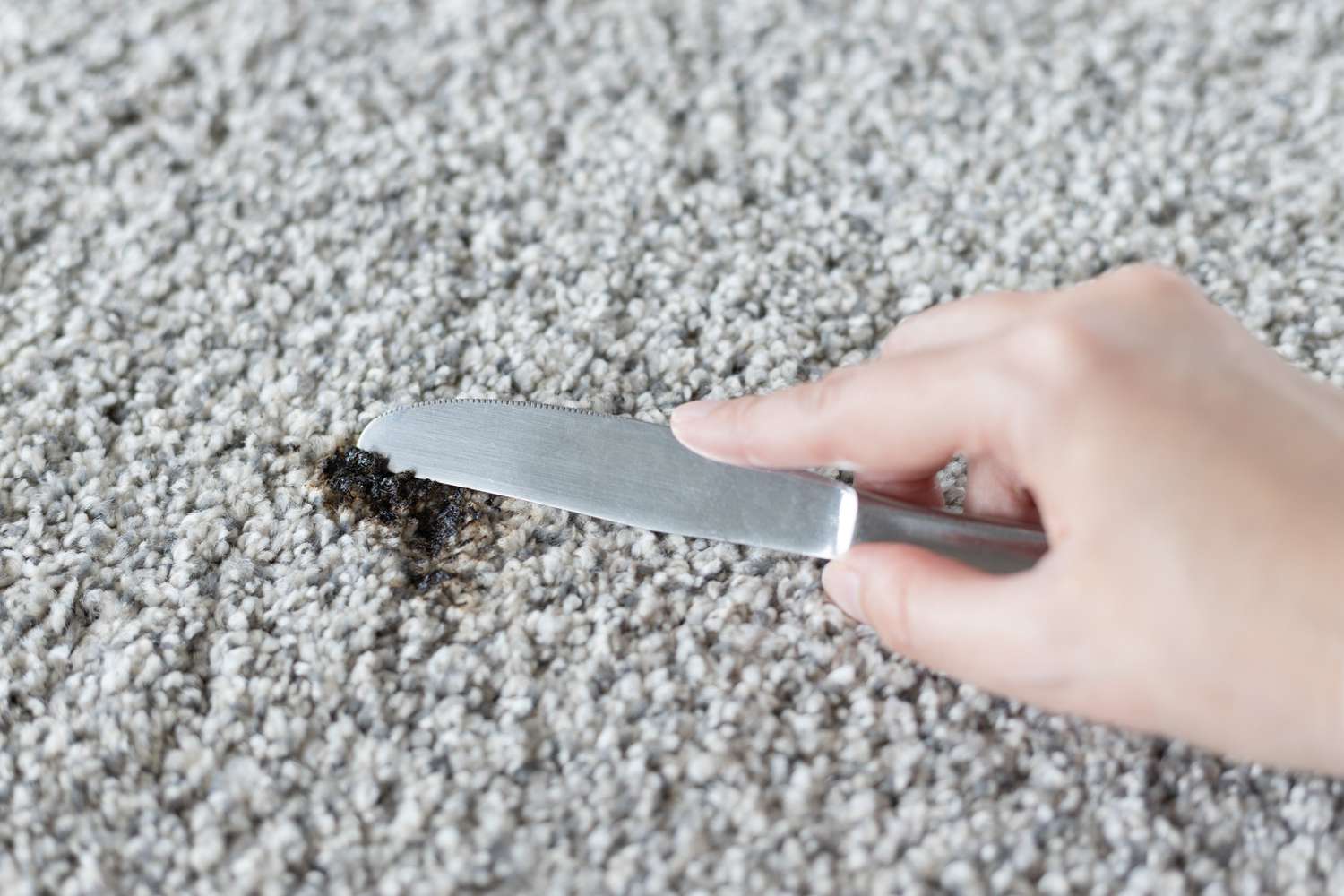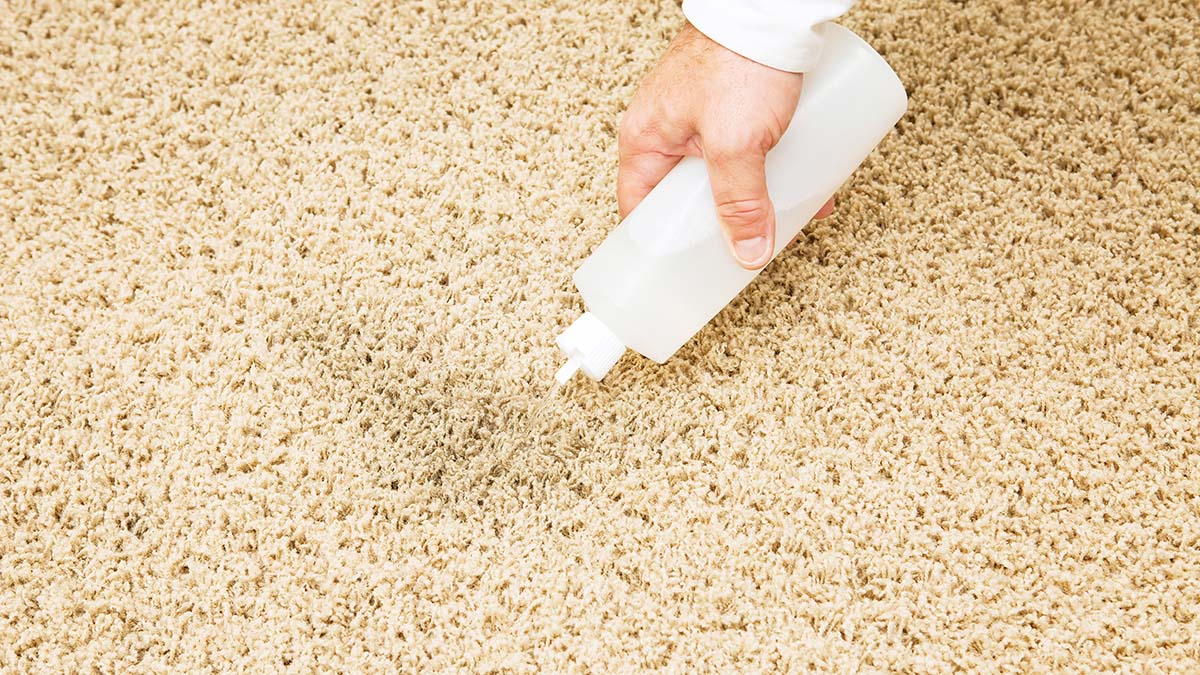

Articles
How To Remove Water Stains From Carpet
Modified: October 28, 2024
Learn effective techniques to remove water stains from carpet with our comprehensive articles. Find out how to restore your carpet's pristine condition.
(Many of the links in this article redirect to a specific reviewed product. Your purchase of these products through affiliate links helps to generate commission for Storables.com, at no extra cost. Learn more)
Introduction
Water stains on carpets can be a real eyesore, not to mention a source of frustration for homeowners. Whether it’s a spill from a glass of water, an accidental overflow from a washing machine, or even a leak from a nearby plumbing fixture, water stains can leave permanent marks on your beloved carpets if not treated promptly and correctly.
Fortunately, there are several methods that can help you effectively remove water stains from your carpet and restore its pristine appearance. In this article, we will explore different techniques using readily available household ingredients and specialized products. By following these methods, you can say goodbye to those unsightly water stains and enjoy a fresh and clean carpet once again.
Key Takeaways:
- Say goodbye to water stains on your carpet by using household ingredients like vinegar and baking soda, club soda, hydrogen peroxide, or specialized stain remover products. Act quickly, prepare the area, and choose the right method for effective stain removal.
- Understanding the nature of water stains and preparing the area are crucial for successful stain removal. Choose from various methods like vinegar and baking soda, club soda, hydrogen peroxide, carpet cleaner, or stain remover products to restore your carpet’s pristine appearance.
Understanding Water Stains on Carpets
Before diving into the various methods of removing water stains from carpets, it’s important to understand the nature of these stains. When water comes into contact with a carpet, it can penetrate the fibers and leave behind residue and discoloration. The type of water that causes the stain can also affect the severity and difficulty in removing it.
There are three main types of water that can cause stains on carpets:
- Clean Water: This is water from a clean source, such as a faucet or rainwater. Clean water stains are generally easier to remove as they do not contain any contaminants.
- Gray Water: Gray water comes from sources like dishwater or washing machine overflow. It may contain mild contaminants and can leave behind more stubborn stains on carpets.
- Black Water: Black water is highly contaminated water, typically from sewage backups or flooding. This type of water can cause severe staining and may require professional cleaning services to properly handle.
When dealing with water stains on carpets, it’s crucial to act quickly to prevent the stain from setting and becoming permanent. The longer the water sits on the carpet, the more difficult it becomes to remove the stain.
Now that we have a better understanding of water stains, let’s explore the methods and steps you can take to successfully remove these stains from your carpets.
Preparing for the Removal Process
Before you begin the process of removing water stains from your carpet, it’s essential to properly prepare and gather the necessary supplies. This will ensure that you have everything you need at hand, making the process smoother and more effective.
Here are some steps to follow when preparing for the removal process:
- Blot the stain: If the water stain is still wet, use a clean cloth or paper towel to gently blot the area. Avoid rubbing as it can push the stain deeper into the carpet fibers.
- Ventilate the area: Open windows or use fans to promote airflow and help dry the carpet. Adequate ventilation will prevent mold and mildew growth.
- Gather cleaning supplies: Depending on the method you choose, gather the necessary cleaning supplies. This may include vinegar, baking soda, club soda, hydrogen peroxide, carpet cleaner, and stain remover products.
- Pretest on a small area: Before applying any cleaning solution to the stained area, perform a patch test on a small, inconspicuous area of the carpet. This will help ensure that the cleaning solution doesn’t cause any damage or discoloration.
- Read instructions: If you’re using a commercially available stain remover or carpet cleaner, carefully read the instructions provided by the manufacturer. Follow the recommended dilution ratios and application methods to achieve the best results.
- Protect surrounding furniture: If the water stain is near any furniture or décor, consider moving them temporarily to minimize the risk of accidental damage or staining during the removal process.
By properly preparing for the removal process, you can lay the groundwork for a successful and efficient stain removal experience. With the necessary supplies in hand and the area prepped, you’re ready to tackle those water stains head-on.
Method 1: Using Vinegar and Baking Soda
Vinegar and baking soda are popular and effective household ingredients for cleaning and stain removal. When combined, they create a powerful cleaning agent that can help remove water stains from your carpet.
Here’s how to use vinegar and baking soda to tackle water stains:
- Blot the stain: If the water stain is still wet, use a clean cloth or paper towel to gently blot the area, absorbing as much moisture as possible.
- Prepare the solution: In a spray bottle, mix equal parts water and white vinegar. Shake well to ensure they are properly combined.
- Spray the mixture: Generously spray the vinegar and water solution onto the water stain. Make sure to saturate the area thoroughly.
- Let it sit: Allow the solution to sit on the stain for about 5-10 minutes. This gives it time to break down and loosen the stain.
- Blot the stain again: Take a clean cloth or paper towel and blot the area to absorb the vinegar and water mixture, along with the loosened stain particles.
- Create a baking soda paste: In a small bowl, mix equal parts baking soda and water to create a thick paste.
- Apply the paste: Use a clean cloth or your fingers to apply the baking soda paste directly onto the water stain. Gently rub it into the carpet fibers.
- Let it dry: Allow the baking soda paste to dry completely on the carpet. This usually takes around 2-3 hours.
- Vacuum the area: Once the baking soda paste is dry, use a vacuum cleaner with a brush attachment to gently vacuum away the dried paste and any remaining stain particles.
This method can be an effective solution for mild to moderate water stains on carpets. Vinegar helps break down and dissolve the stains, while baking soda acts as a natural deodorizer, absorbing any residual odors. Remember to perform a patch test on a small area of the carpet before applying the solution to the entire stain.
Continue reading to discover additional methods for removing water stains from your carpet.
Method 2: Using Club Soda
Club soda is a fizzy and refreshing beverage, but did you know that it can also be an effective solution for removing water stains from your carpet? The carbonation in club soda helps lift stains and can work wonders on water marks.
Follow these steps to use club soda to remove water stains from your carpet:
- Blot the stain: If the water stain is still wet, use a clean cloth or paper towel to gently blot the area, absorbing as much moisture as possible.
- Pour club soda onto the stain: Pour a small amount of club soda directly onto the water stain. Ensure that the stain is adequately saturated.
- Gently blot the stain: Take a clean cloth or paper towel and blot the stain, working from the outside towards the center. This helps lift the stain and transfer it onto the cloth.
- Repeat if necessary: If the stain persists, repeat the process by pouring more club soda onto the stain and blotting until the stain is removed.
- Blot with clean water: Once the stain is removed, dampen a clean cloth with water and gently blot the area to remove any club soda residue.
- Dry the carpet: Use a fan or open windows to help dry the carpet completely. This step is crucial in preventing any residual moisture from causing mold or mildew growth.
Club soda works by breaking down the stain and lifting it from the carpet fibers, making it easier to remove. It’s important to act quickly and address the water stain as soon as possible. The longer the stain sets, the more challenging it becomes to remove.
While club soda is generally safe for most carpets, it’s still a good idea to perform a patch test in an inconspicuous area before applying it to the water stain.
Now that you’ve learned how to use vinegar and baking soda as well as club soda, let’s explore another effective method for removing water stains from your carpet.
Blot the stain with a clean, white cloth to absorb as much water as possible. Mix equal parts white vinegar and water, then spray the solution onto the stain. Blot with a clean cloth and repeat until the stain is gone.
Read more: How To Remove Stains From Wool Carpet
Method 3: Using Hydrogen Peroxide
Hydrogen peroxide is a powerful and versatile cleaning agent that can be used to remove stubborn water stains from your carpet. It acts as a mild bleaching agent, helping to break down and lift stains effectively.
Follow these steps to use hydrogen peroxide to remove water stains from your carpet:
- Blot the stain: If the water stain is still wet, use a clean cloth or paper towel to gently blot the area, absorbing as much moisture as possible.
- Prepare the solution: In a spray bottle, mix equal parts hydrogen peroxide and water. Shake well to ensure they are thoroughly combined.
- Spray the mixture: Liberally spray the hydrogen peroxide and water solution onto the water stain. Make sure to fully saturate the stained area.
- Let it sit: Allow the solution to sit on the stain for about 10-15 minutes. This will give it time to penetrate the stain and break it down.
- Blot the stain again: Take a clean cloth or paper towel and blot the area to absorb the hydrogen peroxide solution along with the loosened stain particles.
- Rinse with water: Dampen a clean cloth with water and gently blot the area to remove any residual hydrogen peroxide.
- Dry the carpet: Use a fan or open windows to help dry the carpet completely. This step is essential in preventing any leftover moisture from causing mold or mildew growth.
Hydrogen peroxide is effective in breaking down water stains and eliminating discoloration. However, it’s important to note that hydrogen peroxide can have bleaching properties, so it’s crucial to perform a patch test in an inconspicuous area to ensure it doesn’t cause any color fading or damage.
This method is particularly useful for older water stains or stubborn marks that have been sitting on the carpet for some time.
Now that you’re familiar with the vinegar and baking soda, club soda, and hydrogen peroxide methods, let’s explore another effective technique for removing water stains from your carpet.
Method 4: Using Carpet Cleaner
When it comes to tackling tough water stains on carpets, using a carpet cleaner can be an effective and convenient solution. Carpet cleaners are specially formulated to deep clean carpets, removing stains and restoring their original appearance.
Here’s how you can use a carpet cleaner to remove water stains from your carpet:
- Blot the stain: If the water stain is still wet, use a clean cloth or paper towel to gently blot the area, absorbing as much moisture as possible.
- Choose the right carpet cleaner: Select a carpet cleaner that is specifically designed for stain removal. Read the instructions provided by the manufacturer to ensure you are using the product correctly.
- Prepare the carpet cleaner: Dilute the carpet cleaner according to the manufacturer’s instructions. Fill a clean spray bottle or the provided reservoir in the carpet cleaner machine with the diluted solution.
- Apply the cleaner to the stain: Spray the carpet cleaner directly onto the water stain. Make sure the stained area is thoroughly saturated with the cleaner.
- Scrub the stain: Use a soft-bristle brush or a clean cloth to gently scrub the stained area. Work the cleaner into the carpet fibers to break down the stain.
- Let it sit: Allow the carpet cleaner to sit on the stain for the recommended amount of time specified on the product instructions. This gives the cleaner time to lift and dissolve the stain.
- Blot the stain and rinse: Use a clean cloth or paper towel to blot the area, absorbing the carpet cleaner and any loosened stain particles. Rinse the area with clean water to remove any residue.
- Dry the carpet: Use a fan or open windows to help dry the carpet thoroughly. Proper drying prevents mold and mildew growth.
Using a carpet cleaner can be an efficient way to tackle water stains, especially for larger or deeply embedded stains. The powerful cleaning agents in carpet cleaners are designed to penetrate the carpet fibers and break down stubborn stains.
Remember to test the carpet cleaner on a small, inconspicuous area before using it on the entire stain. This ensures that the cleaner doesn’t cause any discoloration or damage to your carpet.
Now that you’ve learned about the vinegar and baking soda, club soda, hydrogen peroxide, and carpet cleaner methods, let’s explore another effective technique for removing water stains from your carpet.
Method 5: Using Stain Remover Products
When traditional cleaning methods don’t fully remove water stains from your carpet, using specialized stain remover products can be a game-changer. These products are specifically formulated to target and eliminate tough stains, providing an effective solution for water stains.
Follow these steps to use stain remover products to remove water stains from your carpet:
- Blot the stain: If the water stain is still wet, use a clean cloth or paper towel to gently blot the area, absorbing as much moisture as possible.
- Choose a suitable stain remover: Look for a stain remover product that is specifically designed to tackle water stains. Read the instructions provided by the manufacturer to understand how to use the product correctly.
- Apply the stain remover: Follow the instructions on the product and apply the stain remover directly to the water stain. Make sure to cover the stained area thoroughly.
- Let it sit: Allow the stain remover to penetrate the stain as specified on the product instructions. This gives it time to break down the stain particles.
- Blot and scrub the stain: Take a clean cloth or sponge and gently blot the area to absorb the stain remover and any loosened particles. If instructed by the product, use a soft brush to scrub the stain in circular motions.
- Rinse or vacuum the area: Depending on the product, you may need to rinse the area with clean water or use a vacuum cleaner with a brush attachment to remove any residue.
- Dry the carpet: Ensure the carpet is properly dried by using a fan or opening windows. This step prevents any moisture from causing mold or mildew growth.
Stain remover products are designed to target specific types of stains and can often provide excellent results when it comes to removing tough water stains. These products often contain specialized enzymes or chemicals that break down the stain molecules, making them easier to remove.
It’s essential to read and follow the instructions provided by the stain remover product to ensure proper application and avoid any potential damage to your carpet.
By utilizing stain remover products specifically formulated for water stains, you can effectively tackle even the most stubborn marks, leaving your carpet looking clean and fresh.
Now that you’re familiar with five different methods to remove water stains from your carpet, you have a variety of options to choose from based on the severity of the stain and the resources available to you. Experiment with these techniques and find the one that works best for your carpet and the specific type of water stain you’re dealing with. With a little patience and effort, your carpet can be free from water stains and look as good as new.
Conclusion
Water stains on carpets can be unsightly and frustrating, but with the right techniques and products, you can effectively remove these stains and restore the beauty of your carpet. Whether you opt for natural ingredients like vinegar and baking soda, or specialized products like club soda, hydrogen peroxide, or stain remover products, there are various methods available to tackle water stains.
Remember to act quickly and blot the stain as soon as possible to prevent it from setting in. Preparing the area by gathering the necessary supplies and protecting surrounding furniture can make the removal process smoother and more efficient.
The methods outlined in this article offer different approaches to removing water stains. Vinegar and baking soda work well for mild to moderate stains, while club soda is a convenient option for immediate treatment. Hydrogen peroxide is particularly effective for older or stubborn stains, and carpet cleaner products can provide a deep clean for larger or deeply embedded stains. Stain remover products specifically formulated for water stains can tackle even the toughest marks.
It’s essential to perform a patch test before applying any cleaning solution or product to the entire stain, as this will help you assess its compatibility with your carpet and avoid any potential damage or discoloration.
By choosing the appropriate method and following the steps outlined, you can successfully remove water stains from your carpet and restore its pristine appearance. Don’t forget to properly dry the carpet to prevent mold or mildew growth. If you find that the stain persists or if you’re dealing with black water stains or extensive damage, it may be best to seek professional help.
With a little effort and the right approach, you can say goodbye to water stains and enjoy a fresh and clean carpet once again.
Frequently Asked Questions about How To Remove Water Stains From Carpet
Was this page helpful?
At Storables.com, we guarantee accurate and reliable information. Our content, validated by Expert Board Contributors, is crafted following stringent Editorial Policies. We're committed to providing you with well-researched, expert-backed insights for all your informational needs.
